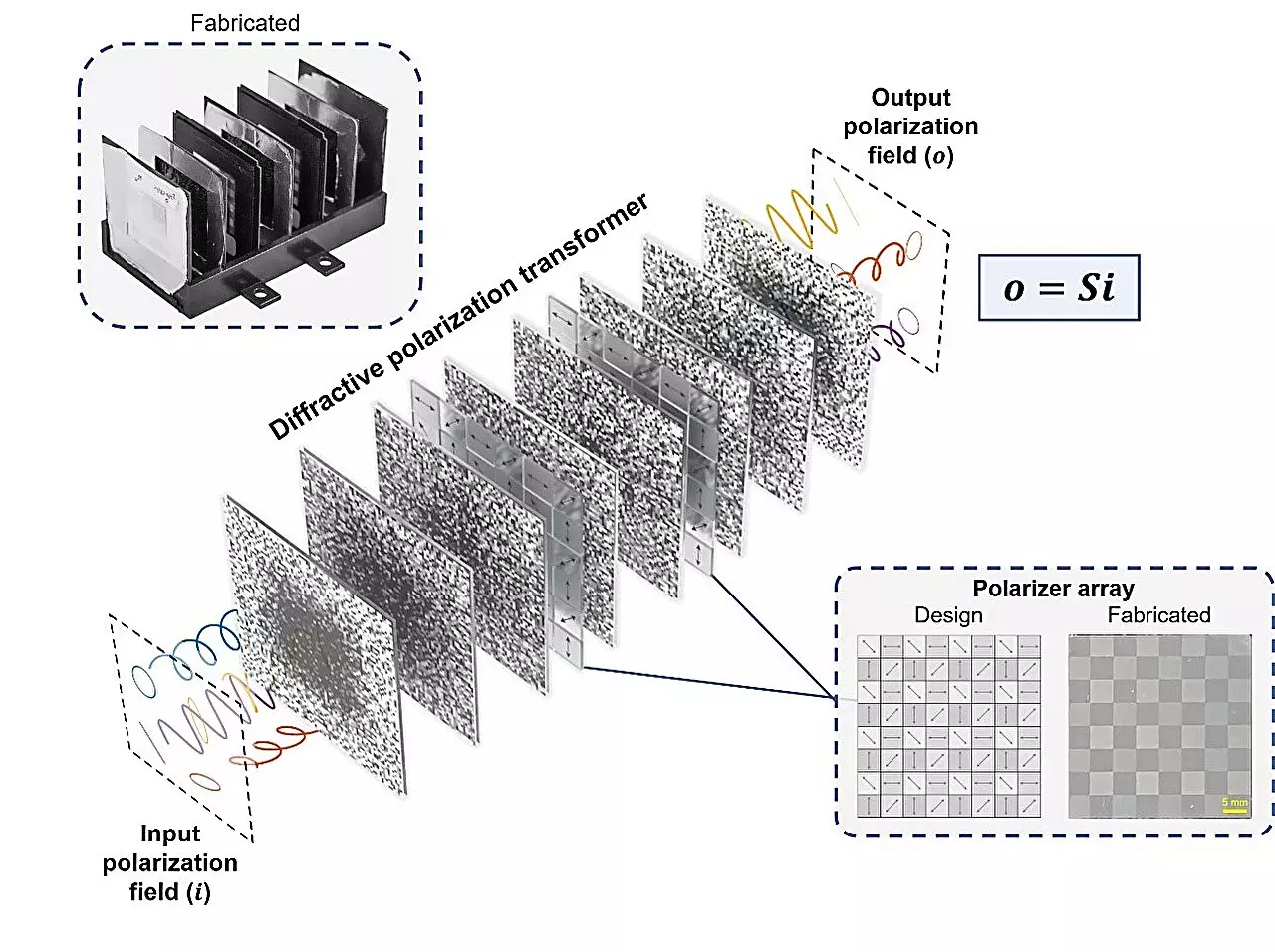Polarization, the orientation of oscillations in a light wave, is a critical factor in various optical applications. It plays a role in everything from sunglasses to advanced optical communication systems. Manipulating the spatial distribution of polarization presents challenges, especially when dealing with non-uniform polarization states. Current polarization modulation devices have limitations, as they only work with predefined input polarization states, making them ineffective for unpredictable spatially varying polarization fields. However, a team of researchers at UCLA has developed a solution to this problem.
The researchers at UCLA have designed a polarization transformer diffractive network that offers a new approach to universal polarization transformations of spatially varying polarization fields. The team’s findings, published in the journal Advanced Materials, introduce a diffractive network capable of synthesizing a wide range of complex-valued polarization scattering matrices between different locations within the input and output fields-of-views. This all-optical synthesizer is composed of isotropic diffractive layers and arrays of linear polarizers.
Supervised Deep Learning
To create this diffractive polarization transformer, the researchers used supervised deep learning. Each layer of the diffractive network consists of thousands of diffractive features with optimizable transmission coefficients. Additionally, 2D arrays of linear polarizers with different orientations are strategically placed between the diffractive layers. This unique optical architecture allows the diffractive polarization transformer to implement 10,000 different spatially-encoded polarization scattering matrices within a compact processor volume.
Experimental Validation
The UCLA team validated the feasibility of their diffractive polarization transformer through experiments. Using wire-grid polarizers fabricated through photolithography and 3D-printed diffractive layers, the team built a proof-of-concept design capable of performing user-defined polarization permutation operations. The fabricated transformer successfully navigated the polarization states at the input to the desired spatially varying polarization states at the output, matching the numerical simulations and design objectives. This breakthrough opens up possibilities for polarization transformations that were previously unattainable.
The UCLA team plans to improve their designs to operate under broadband illumination, enabling simultaneous processing of amplitude, phase, polarization, and spectral features. This advancement could lead to the development of intelligent machine vision systems with enhanced object detection and classification capabilities. These systems, incorporating diffractive polarization transformers, could have diverse applications in remote sensing, security/defense, material inspection, and medical imaging.
The design of the diffractive polarization transformer by the UCLA research team marks a significant advancement in optical technologies. This breakthrough allows for universal polarization transformations of spatially varying polarization fields, which were previously challenging to achieve. By harnessing the power of deep learning and intricate optical architectures, the team created a device capable of implementing thousands of polarization scattering matrices. With further improvements and refinement, these diffractive transformers could revolutionize optical technologies in various fields, opening up new possibilities for enhanced machine vision systems and advancing applications in remote sensing, security, materials inspection, and medical imaging.


Leave a Reply